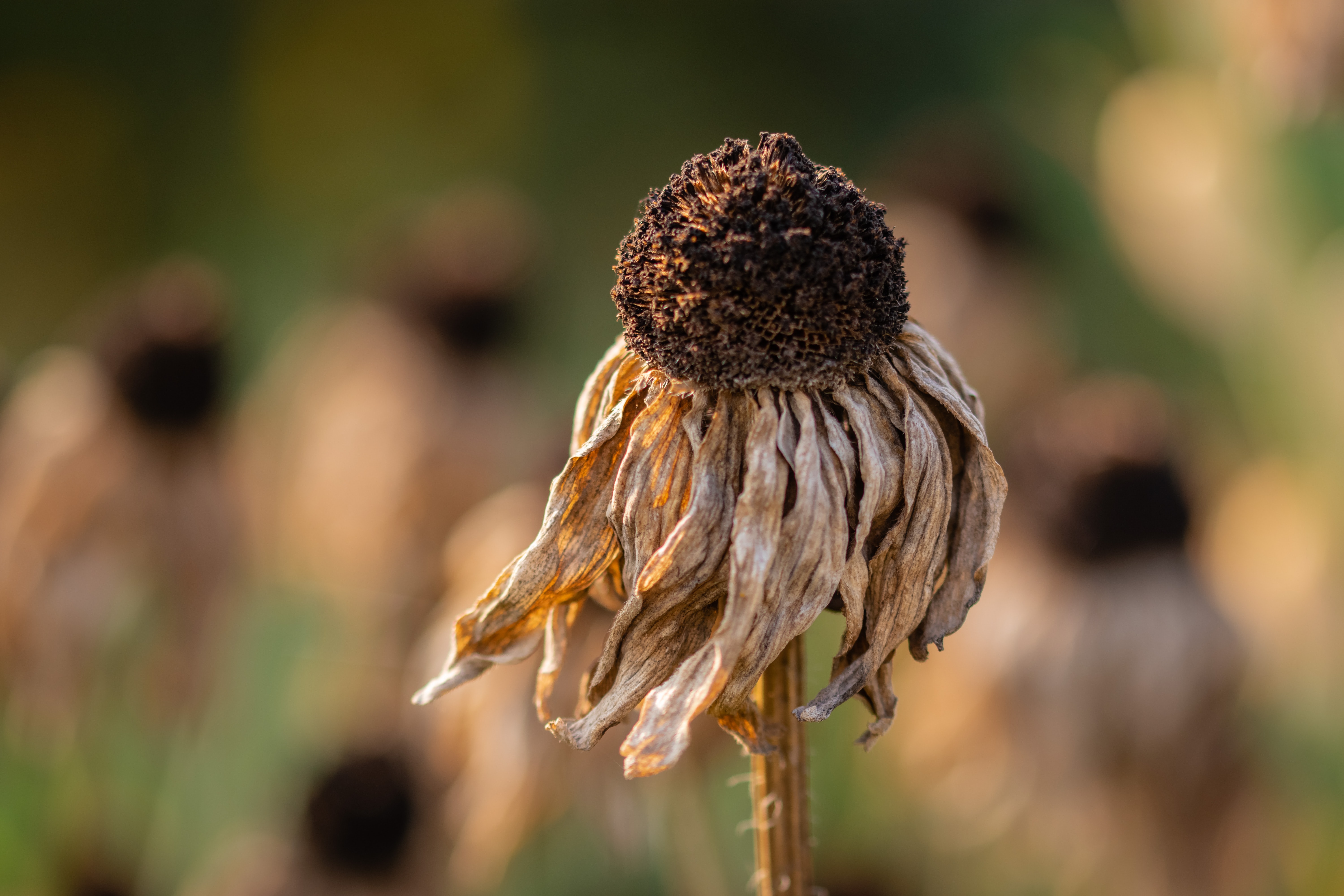
Photo by Krzysztof Niewolny on Unsplash
Fungi learn how to cope with drought, but at a cost
Understanding what climate change will do to belowground ecosystems helps us predict what will happen aboveground, too
Climate change is a stress that all organisms must deal with. One major stress from rising temperatures is an increase in droughts.
One reason the risk of drought is climbing is that warmer temperatures dry out soil, especially during periods of low precipitation. Dry soil creates a snowball effect by killing plants, which yields more dry soil. But the effects of drought do not stop at plants – some fungi suffer as well.
It might appear as though fungi are not important because they are only scattered here or there when you see them in the woods or in the grass. That is because most fungal growth is underground. Fungi are dominant members of the community of microscopic organisms that live beneath our feet. In many soil communities, fungi represent an average of 55%-89% of all microbes. Because fungi strongly impact ecosystem health, how fungi respond to drought is an important ecological question.
We know other immobile organisms, like plants, can deal with drought by stress priming. Stress priming is a process where exposure to a stress, such as extreme cold or pathogen attack, helps an organism to respond better to future stress events. In some microbes, stress priming can lead to 10 times better survival rates. Plants have been studied extensively for their ability to stress prime for drought, however, filamentous fungi (meaning fungi that grow in long, thin strands) have not.
A pair of researchers at Germany's University of Bayreuth have now investigated if filamentous fungi have the ability to stress prime for drought. They used two different species of fungi that are found ubiquitously in soil as models: Penicillium chrysogenum (a source of penicillin) and Neurospora crassa, a bread mold.
To prime them, the fungi were exposed to a mild simulated drought by allowing the soil they grew in to dry out, after which they were allowed to recover. Then the researchers hit them with another, more severe drought. They measured the growth and activity of the fungi, and compared those that were primed before the severe drought stress to other fungi that were not. They found Pencillium was able to stress prime and maintain their "primed" state for at least seven days. Neurospora showed no ability to stress prime.

Climate change-induced droughts could have devastating effects on plants and fungi
Photo by Paweł Czerwiński on Unsplash
But stress priming comes with a cost. The researchers saw that fungi that were primed, but not exposed to severe drought, grew less than fungi that were not exposed to stress at all. This is because stress priming redirects resources that could otherwise be used for growth, a concept seen in other studies. This means the intensity, frequency, and time frame between drought events could favor some species over others, causing a shift in fungal community composition. Filamentous fungi that stress prime would most likely have a competitive edge in an environment where there is a shorter time lapse between droughts. Non-stress primers, however, could have an advantage in environments with longer time spans between drought stresses because stress priming wastes resources for a memory that may not last long enough to benefit them.
Filamentous fungi get their name because they grow in branching filaments, called hyphae. The hyphae expand outwards to form large networks of tissue that traffic nutrients from distant places, making filamentous fungi expert scavengers. One of the dominant roles of scavenging fungi in maintaining a healthy ecosystem is nutrient cycling by decomposition. By breaking down organic molecules, fungi release nutrients into the ecosystem that would otherwise be unobtainable to other organisms.
Another important role for some filamentous fungi is establishing a symbiotic relationship with plants by invading into their roots so both organisms can exchange nutrients with each other. These fungi are referred to as mycorrhizae. Many plants are dependent on nutrients provided by mycorrhizae to grow and thrive.
Changes from drought in the growth, activity, or composition of the fungal community could thus have a rippling effect on an ecosystem. They could also have negative impacts on overall climate.
For example, these changes could disrupt the ability of fungi to store carbon in soil. Soil contains over three times more carbon than the atmosphere and four times the amount in all living plants and animals, and fungi are a critical part of that. In boreal forests, which account for about 30% of total forest area in the world, 50-70% of stored carbon comes from dead roots and fungi growing in the soil. If soil cannot hold on to as much carbon, then more carbon dioxide will be released into the atmosphere. Changes to fungal community composition could also have direct environmental impacts by altering fungal roles in decomposition and plant-fungi relationships.
To us, fungi are small and often invisible organisms. But they are critical components of ecosystems, and living mostly underground won't protect them from the effects of climate change. Studying how they respond to environmental stressors will help us better predict how all of the important ecological processes fungi contribute to will change as the world warms –and, ultimately, what that means for those of us aboveground.





Climate change is real and gradually affecting all the living organisms, and if not addressed properly, it will be a disaster for our planet. We have already started to see the effects such as seasonal changes, rising sea level and temperature variations around the global. You nicely explained the effect on healthy ecosystem in reference to fungi. If healthy ecosystems start to suffer because of climate change, I think it would severely affect the lives of humans. Thanks for a nice read!